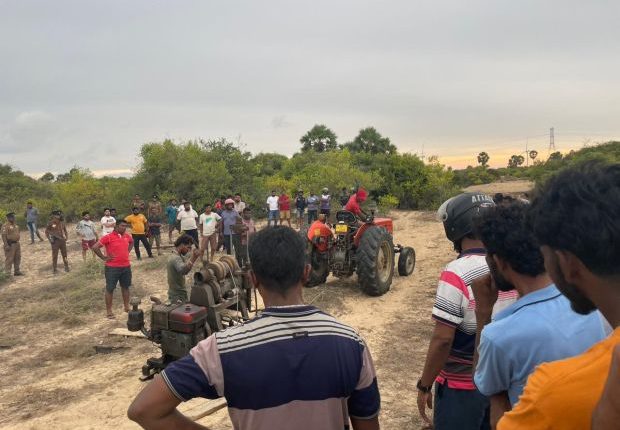In Mannar, clean power turns into community conflict
By Raj Sivanathan
The Mannar peninsula, a wind-blown stretch of land known for its migratory birds, shallow lagoons and resilient fishing villages, now finds itself at the centre of one of Sri Lanka’s fiercest environmental and social battles.
Once promoted as a beacon of sustainable energy, the Mannar Wind and Solar Project has instead ignited widespread community resistance, allegations of land grabbing and accusations of heavy-handed state response. The conflict reflects a deeper dilemma: how can Sri Lanka pursue renewable energy without trampling over the rights and livelihoods of its people?
To be fair, the government’s ambition is not misplaced. Sri Lanka faces a critical need to diversify its energy mix, cut fuel imports and meet international climate commitments. Mannar’s winds and sunlight make it an ideal location for large-scale renewable installations.
Officials claim that the project will generate hundreds of megawatts of clean electricity, reduce dependence on imported oil, lower carbon emissions and create short-term jobs during construction. The project also offers geopolitical and financial advantages, attracting loans and investments from international development banks keen to support green infrastructure in South Asia. For Colombo, Mannar is a symbol of modernization with clean energy, foreign capital and global relevance.
But for Mannar’s residents, the same project has become a symbol of exclusion and broken promises. Beneath the glossy energy-narrative lies a story of displacement, disrupted livelihoods and ecological risk.
Mannar’s coastline is a protected wetland of international importance – a Ramsar site and an Important Bird Area (IBA). The peninsula’s lagoons serve as feeding grounds for migratory birds and nurseries for fish. Locals say turbine construction, road expansion and sand mining have already begun altering coastal ecosystems.
Fisherfolk fear losing their traditional access to the sea while small farmers worry about land alienation and compensation delays. “We are not against development, but we want development that doesn’t destroy our lives,” says a fisherman involved in the protests.
In a striking turn, Christian priests and civil society groups have stepped to the forefront of the protests, lending moral weight to the movement. Their involvement has turned what might have remained a local dispute into a national issue of conscience.
“The people of Mannar are not obstacles to progress,” one parish priest declared during a rally. “They are asking for justice, to be consulted, to be respected and to be protected.”
This convergence of faith and activism has amplified community voices, demanding transparency in the Environmental Impact Assessment (EIA) process, fair compensation and public consultation before further construction proceeds.
Despite the outcry, the government remains unmoved. Several factors explain its persistence:
Energy security – policymakers view the project as essential to reducing dependency on imported fuel.
Investor confidence – reversing or delaying large-scale contracts could damage Sri Lanka’s image with foreign investors and lenders.
Political optics – the administration can showcase renewable energy as proof of progress amid economic recovery efforts.
In short, Mannar’s wind project has become politically too important to fail, even if local communities are paying the price. The situation escalated when residents attempted to block vehicles transporting equipment to construction sites. Police responded with force, resulting in injuries and several arrests. Those detained now face charges of unlawful assembly and obstruction.
Human rights observers have condemned what they describe as “the criminalization of community protest”. Legal experts warn that such confrontations only deepen mistrust and polarisation in an already marginalised region.
The government insists the project will deliver long-term economic and environmental benefits. Yet without robust safeguards, the opposite may occur.
Unchecked industrialisation in Mannar could destroy fragile coastal ecosystems, undermine local fisheries and food security, trigger outward migration and erode faith in public institutions. Once lost, the wetlands and livelihoods that define Mannar cannot easily be replaced.
Conversely, if managed responsibly through genuine consultation, biodiversity protection, and revenue-sharing, Mannar could serve as a model for sustainable energy development.
The Mannar controversy offers a clear lesson: green energy is not automatically just energy. Renewable projects must uphold social justice, ecological integrity and the consent of affected communities.
True sustainability requires dialogue, not dominance. The government should pause expansion until an independent review addresses the environmental, social and legal concerns raised by residents and civil society groups.
The winds of Mannar have the power to light the nation, but only if they do not extinguish the lives of those who have long called the peninsula home.
-This article was originally featured on groundviews.org



Comments are closed, but trackbacks and pingbacks are open.